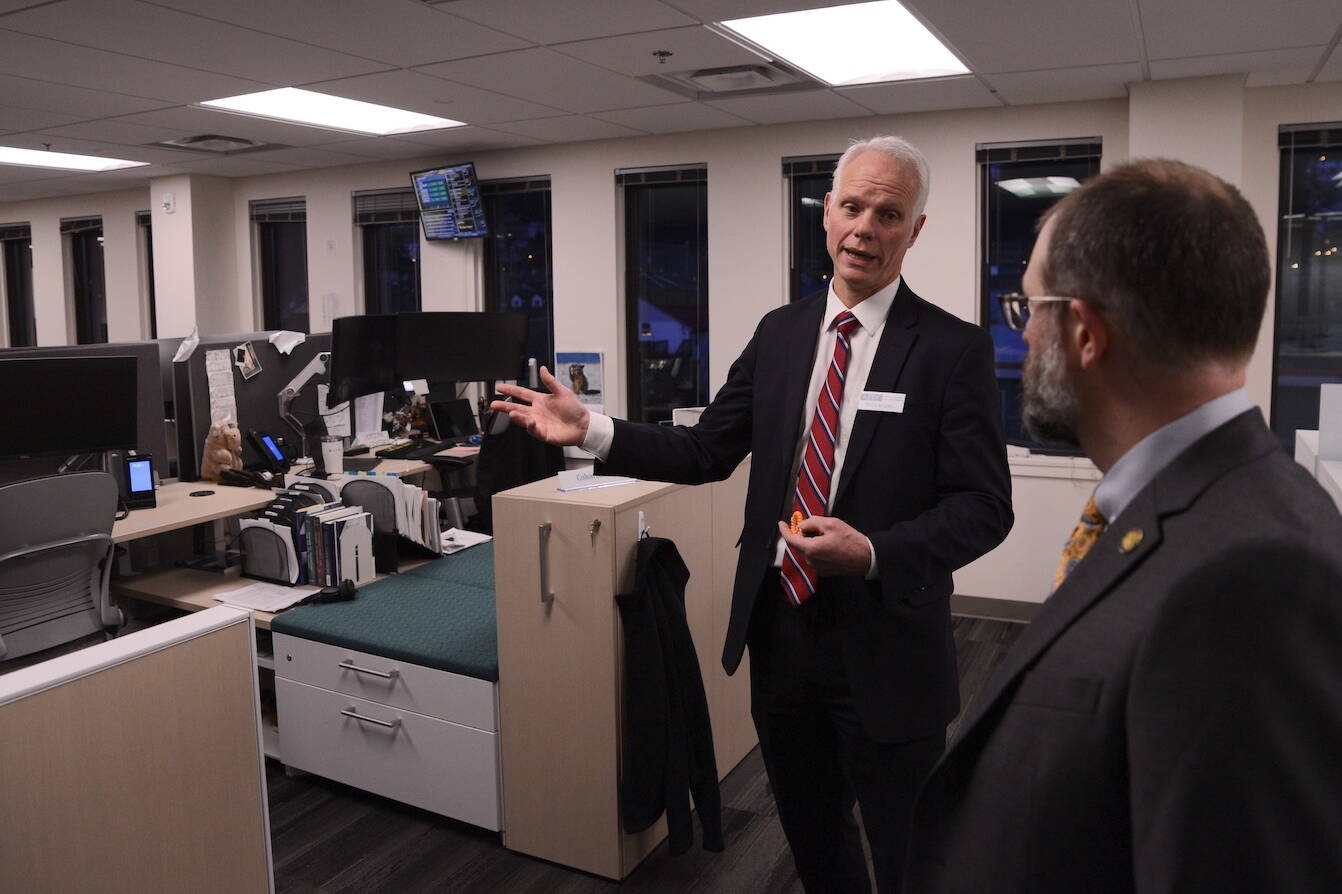The leaders of the $76 billion Alaska Permanent Fund voted unanimously on Friday to adopt a strategic plan that calls for borrowing up to $4 billion in order to increase the amount of money available for investments.
Friday’s vote has limited effect: The borrowing could take place only if the Alaska Legislature and Gov. Mike Dunleavy change state law to allow it.
“It’ll start out as a legislative effort, then it would take a bill,” said Paulyn Swanson, communications director of the Alaska Permanent Fund Corp., which manages the fund.
The Alaska Permanent Fund is the No. 1 source of general-purpose state revenue for state services and the annual Permanent Fund dividend. Each year, the fund transfers more than $3 billion to the state treasury, and members of the board of trustees hope to increase that amount by growing the value of the fund.
“This is going to require policymakers, the Legislature, the governor to get their minds wrapped around a concept,” said Deven Mitchell, the corporation’s executive director.
Public comments on the borrowing plan generally opposed the idea, but the six members of the corporation’s board of trustees said in prior meetings that they felt the approach gave fund managers a valuable new tool to increase the value of the Permanent Fund.
That tool, known as leveraging the fund’s accounts, is used widely by other pension funds and endowments, some of which borrow more than 25% of their funds’ value.
If investors’ earnings are greater than the rate of interest on the loan, the approach can boost returns beyond what’s normally possible. If they fall short, the strategy can compound losses.
Members of the board of trustees said they recognized public discomfort with the concept and amended the plan to involve a maximum of $4 billion instead of 10% of the fund’s value.
“I think 10% is concerning to many people,” Mitchell said.
“I think four is the number,” responded trustee Craig Richards.
That proposal was what the board ultimately adopted.
The board also bowed to public opinion in other aspects of their strategic plan by eliminating a suggestion that it raise its investment target above 5% plus inflation. A higher target would have required a more aggressive — and risky — investment strategy.
Trustees also scaled back plans to seek exemptions from the state’s open meetings act. Now, they’re only seeking exemptions that would shield the identity of candidates for a new executive director or chief investment officer.
Mitchell suggested that if the fund’s leverage plan is adopted by the Legislature and succeeds, then trustees will ask for permission for more money.
In Friday’s meeting, he described how that request might go: “If the fund succeeds like we’re hoping for, then we’ll be back and you’ll be able to see the fruits of this authority.”
• James Brooks is a longtime Alaska reporter, having previously worked at the Anchorage Daily News, Juneau Empire, Kodiak Mirror and Fairbanks Daily News-Miner. This article originally appeared online at alaskabeacon.com. Alaska Beacon, an affiliate of States Newsroom, is an independent, nonpartisan news organization focused on connecting Alaskans to their state government.

